
Volvo V60 long-term test
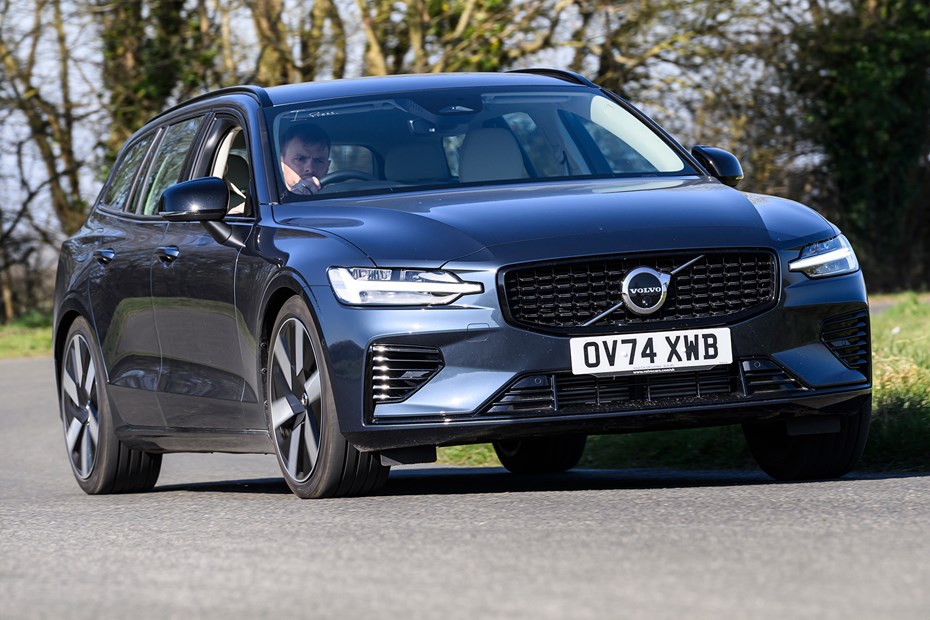
Update 1: Welcome
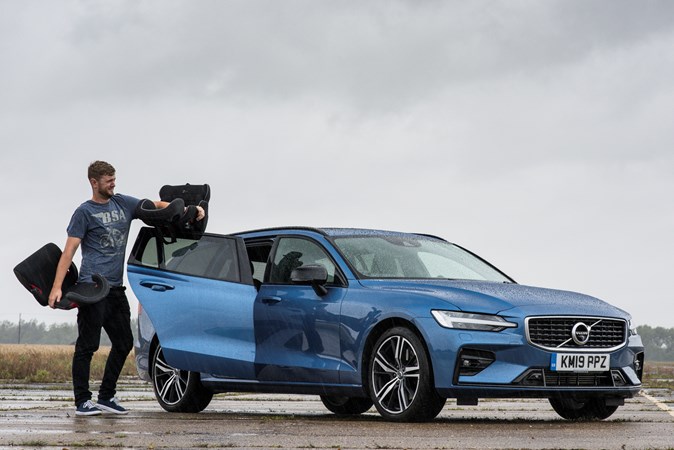
I’ve arrived at a point in my life where my main motoring priorities have been radically derailed – where I previously valued a loud stereo, louder exhaust and the ability to bonfire my tyres, I now look for squashy suspension, supportive seats and the type of silence you only get in the Empty Quarter. Or space. This is because I now have two children and am constantly exhausted.
From what I’ve ascertained so far parenthood is largely the willing exchange of a regular sleep pattern and disposable income for unscripted moments of all-consuming joy – the first time they spontaneously say ‘I love you’, or correctly identify a Lamborghini in traffic, for example. But it also comes with the very real possibility of being restrained in a seat two feet away from a catastrophic emotional meltdown in the middle of a four-hour car journey. Sharing a metal box with two under-fives can, at very short intervals, be madly entertaining or bone-grindingly painful.
For that reason and more I’m delighted to say I’ll be spending the next six months in this Volvo V60, which is as soothing as a Swedish sauna but without the instant thirst or proximity to an unnecessarily nude stranger. Unless your weekend evenings are considerably more wild than mine. Which they undoubtedly are (because of the exhausted thing).
Anyway, we’re so keen on the V60 here at Parkers we named it our champion Large Family Car in the 2019 New Car Awards. I don’t exactly have the biggest family in the world, but I am in that awkward stage where I need a long enough wheelbase to accommodate Isofix car seats without obliterating front passenger legroom, plus a boot that’ll shrug off the combination of a pushchair and child’s mountain bike. There’s usually an adult’s mountain bike, too.
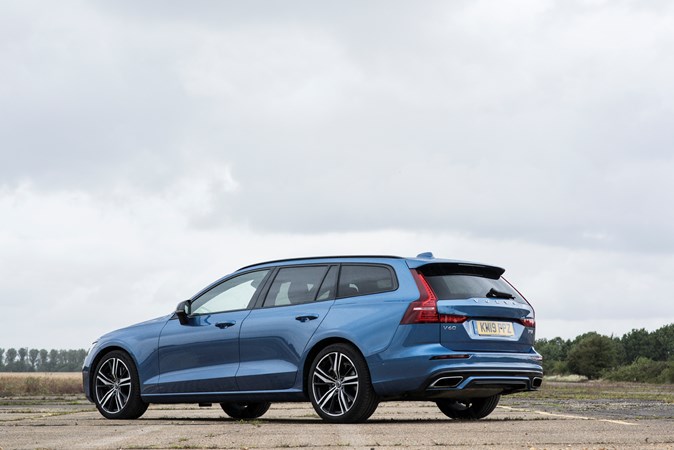
Given that brief you might think I should be running the winner of the Medium Family Car award, and you would be right – except we’ve only just added that class to our list of categories, having previously split cars into either small or large camps. I hope you’ll find the 2020 New Car Awards even more useful as a result.
Anyway, back to the Volvo V60, and because I’m not entirely ready to move on from what made me happy in a former life, I’ve picked a model with 19-inch wheels, a powerful engine and a £2,500 stereo that has the power to vigorously test the integrity of the car’s interior construction.
There’s a serious point to all of this – with a 2.0-litre, four-cylinder petrol producing 245hp at the front and a vast cargo hold at the rear, it won’t have escaped your notice that this car is remarkably similar to the Skoda Octavia vRS Estate long termer I ran previously, a car I loudly proclaimed ‘the best in the world’ most mornings much to my colleagues’ annoyance. Which cost nearly £10,000 less than this Volvo.
That’s a lot of money and no mistake – so the upmarket Swede is going to have to work hard to convince me it’s worth the extra cash.
Update 2: Performance and handling
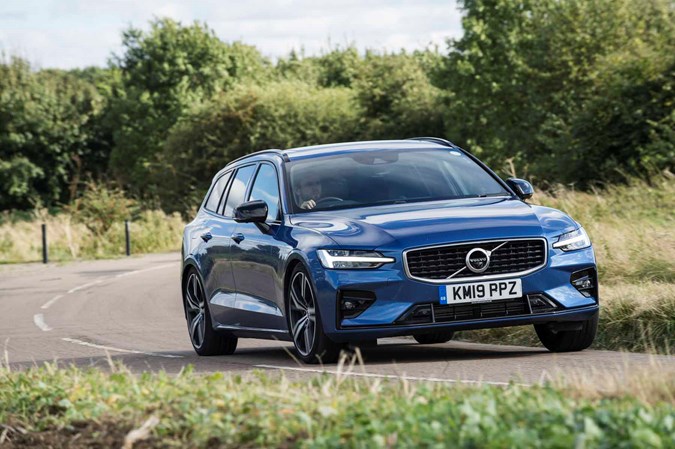
At the time of ordering, our Volvo V60’s T5 petrol engine was the most powerful option, sitting above the D3 and D4 diesels in the relatively compact range available from launch.
However, power isn’t the (only) reason I chose this version. Very soon diesel engines will cease to exist in Volvos; from the S60 onwards, all new models will use petrol, hybrid or electric powertrains only.
In fact Håkan Samuelsson, president and chief executive of Volvo cars, has stated that exclusively internal combustion-powered models will gradually be phased out altogether with petrol hybrids acting as a transition between now and a fully electrified range. So there’s not much longevity in a diesel long term test.
You might wonder why I didn’t pick either the T6 or T8 plug-in hybrid – the answer is those cars debuted late in 2019 and we wanted to run the V60 while it was still our 2019 Large Family Car Award winner.
Plus the T5 badge comes with some seriously understated coolness, and also bookends nicely with the Skoda Octavia vRS Estate I ran previously. That was also powered by a 2.0-litre turbocharged petrol with 245hp. How convenient.
What’s it like then?
Our former range-topper is now firmly in the middle of the V60 road when it comes to performance – with 250hp and 350Nm of torque, and a 0-62mph time of 6.7 seconds. The hybrids feature 340/390hp and slice this time down to 5.7 and 5.1 seconds respectively.
Still, it’s quicker than the 150/190hp D3 and D4, which take 9.9 and 7.9 seconds each, although those promise significantly better fuel economy than the sub-30mpg I’m regularly seeing. Have a look at our new Miles per Pound calculator and you can see that you’ll go further for your money with the diesel or hybrid models – providing you keep the latter charged up.

Still, if you’re not in a position to plug your car in and not overly put off by driving carefully to achieve low 30mpg figures, the T5 is actually a great option in the V60.
It’s in that nice middle ground of being probably a little too powerful for most situations, so you always feel like there’s some in reserve, and it’s much quieter and more refined than the diesel versions.
There is a caveat to that first point, however – this is certainly no hot hatch-bothering estate like the Octavia vRS was. It’s fast, but delivers its power in a much more linear way, so feels less dramatic than the boosty Skoda.
That car was also much keener to get up and go, largely thanks to its quick-shifting DSG gearbox that put you in the engine’s powerband at the drop of a hat. The eight-speed conventional auto in the V60 is much smoother but also quite a bit more ponderous, even when you use the steering-wheel mounted paddles. This car also doesn’t sound anywhere near as exciting.
What about the handling?
It’s extremely planted, the V60, and offers up a huge amount of grip. I actually think the front end bites the tarmac harder than the Octavia, which was prone to moments of worrying understeer, particularly in the wet. But I suspect that was more to do with the tyres.
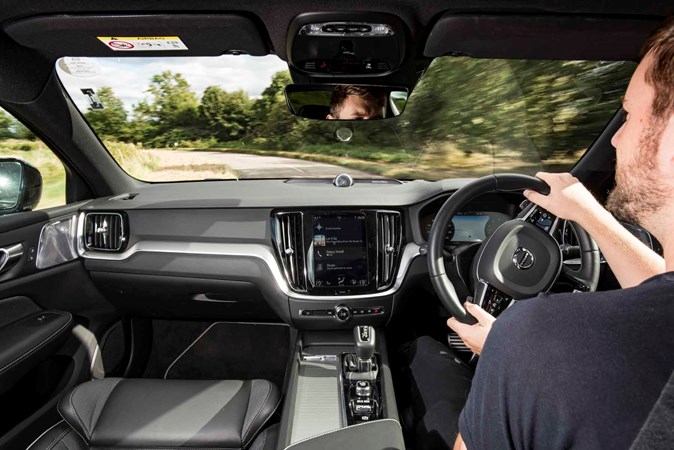
The main difference is the fact that the Skoda became more and more fun the harder you drove it (up until a point, of course) whereas the Volvo hits a sweet spot somewhere just a bit faster than normal driving, and then begins to feel a bit out of its depth. Our car with its adaptive dampers rides nicely and thankfully that doesn’t translate to catastrophic body roll, but it’s still not as agile as the Octavia.
One thing that is absolutely excellent about the V60 is the driving position, which puts you super-low to the ground for a properly hunkered down feel. The chief problem really though is the steering, which is nicely weighted and lovely to use day-to-day, but when you try to hustle the car through some corners it feels vague, adding to the overall feeling that this V60 is better to drive in a much less enthusiastic way.
Still, it’s best to remember that this car doesn’t at any point claim to be a performance model, and Volvo isn’t a maker you gravitate to if you want the last word in driver involvement. For that you want a BMW 3 Series Touring or Alfa Romeo Giulia saloon (no estate in the works there, sadly).
With that in mind the V60 is a hugely polished car – providing loads of confidence inspiring grip and a responsive engine, within the range of performance where it’ll typically be driven. And not a bit more.
Given I largely use this car to shuttle my family around, there’s not a lot more I could ask for. It’s only the occasional traffic-free dash to work where the V60 feels lacking in fun in comparison with the Skoda – and how often do you get one of those?
Update 3: Comfort and Interior
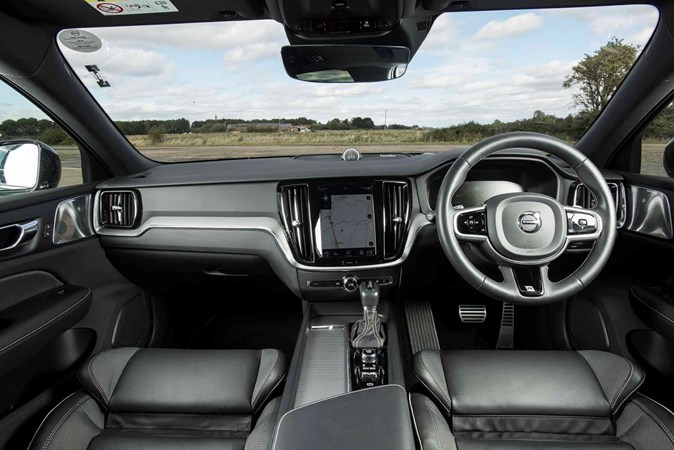
Volvo’s going after the Mercedes-Benz C-Class Estate, Audi A4 Avant and BMW 3 Series Touring with this V60 – aiming it squarely at people who want an upmarket wagon, but not the one all their colleagues have.
That means among the many areas where it needs to hit the mark, interior luxury is the most vital of all. Comfortable, quiet, trimmed in expensive-feeling materials and assembled with hair’s-breadth precision – otherwise you’ll be straight to the local German outlet.
And on the whole it does a very good job, making the BMW look like a button-fest and the Mercedes a bit too glitzy. In terms of interior design it’s closest to the Audi – simple design, nice surfaces and tight shutlines. Everything feels either squashy or substantial, from the soft-touch dashboard top to the bank-vault style door handles. Plus all the switches are knurled like you get in a Bentley. Sort of.
Our R Design Pro car offers few personalisation options (actually, none) and looks very Germanic – lots of dark panels split up with silver trim, framing an insert of material called Metal Mesh. I prefer the Drift Wood panel in the Inscription car, plus its lighter dashboard covering, which in combination makes it look like a cabin in Cornwall we had a holiday in once. But the exterior of our sporty V60 more than makes up for it.
Also lacking customisation is the 12.3-inch dial screen, which presents you with your revs or an eco-gauge plus a speedo, and a turn-by-turn map in between. The 9.0-inch info screen in the centre of the dash is nicely integrated and a useful portrait orientation, but is starting to look a little dated, especially the sat-nav graphics. My colleagues complain about it being hard to use, but like all things it’s simple once you learn how. That said, its unresponsiveness to touch isn’t improving.
The wheel is chunky like a BMW, features neat looking metal-effect shift paddles and hides its multifunction nature by combining its buttons into single piece of plastic on each spoke that moves in four directions. These are super to use – I can skip a track on the stereo without moving my hand at all, by just rolling the fat bit of my thumb onto the edge of the button. It’s basically telepathy.
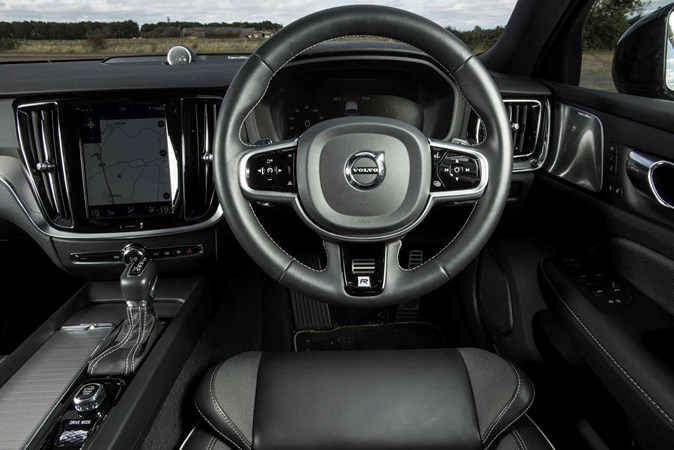
When warning messages that flash up on the screen (you’ve deployed the tow bar, you’re out of screen wash etc) they need to be cancelled using the stereo buttons, which are non-operational in their normal function until you do. That’s left me many times furiously pressing the skip track control (with my actual finger this time) and wondering why the song hadn’t changed.
Other oddities include the fact that the sat-nav’s speed warning system mutes whatever music is playing, temporarily exposing my singing to the world and shattering any illusion I have in my head that I can carry a tune. I’m sure you can turn this off, but I simply can’t be bothered.
The problem is the stereo is often on very loud in the V60, because it is the best in any car I’ve ever driven. It rather need to be – this Bowers and Wilkins system is a punchy £2,500 option, but as far as I’m concerned, you can keep all the other extras in this car and I’d be happy with just this.
It features a 1,100w output driving 15 speakers and a ‘Fresh Air Subwoofer’ – this means it’s integrated into the bodywork, which it actually uses as an enclosure to amplify its extra deep bass. It doesn’t dominate the car with low frequency though, there’s also a rearward facing tweeter on the dash to cut down on windscreen acoustic reflections and a set of powerful and attractively yellow speakers in the doors. Like a McLaren, I tell passengers who often couldn’t care less.
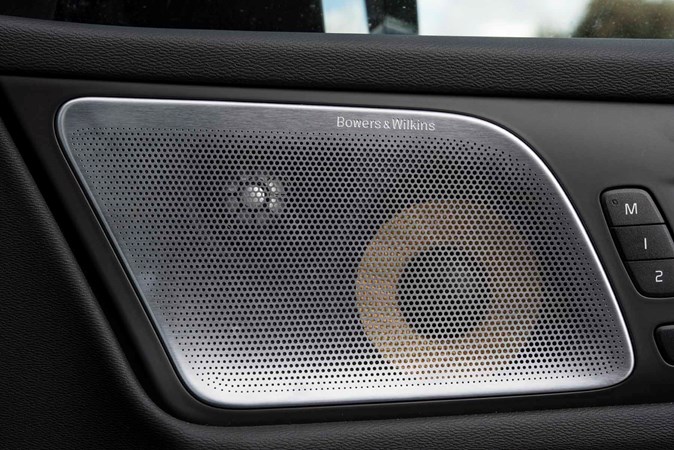
As stereos go it might not be the loudest I’ve experienced (that title goes to the Max Power-style build in my Fiesta when I was 19) but it’s certainly the clearest with the best sound quality this side of Hans Zimmer’s studio (because it’s been set up by Bowers and Wilkins, and not a 19-year-old idiot).
I’ve been told by my sound-tech friend who knows more about these things than me that you can tell a good stereo by the way it sounds when it’s quiet, rather than when it’s loud, and in this respect the Volvo’s system is very impressive. I’ve always thought you can tell a good stereo by how much the subwoofer shakes the door mirror glass and again, the Bowers and Wilkins set up is excellent. At times they’ve been blurrier than an old V-twin Ducati on tickover. That said, my old Fiesta once shook its rear-view clean off the glass, which the Volvo hasn’t managed yet. Potentially because it’s a bit better built.
There are a range of different soundscapes you can choose from, a basic Studio setting, a more enveloping Individual Stage mode with simulated surround sound, and finally the echoey Concert Hall effect. I mostly use the first, with mixed results from the second. The latter is best left for classical music (in my case either the Star Wars or Pirates of the Caribbean soundtrack) and less good for my usual mix (Frank Turner, grindcore or Radio 4). The central speaker in the front makes for very clear vocals, which can often get a bit muddied on car stereos, and it sounds nearly as good in the back as well. If you’re in two minds about ticking this option box you can take it from me that it’s very worthwhile.
The second most useful option on this car is the £750 Active Four-C Chassis (basically adaptive dampers) which gives the V60 a much nicer ride. The versions we’ve driven with standard suspension didn’t ride very well, to put it kindly, particularly if you pick the optional 20-inch alloys. Which to be fair, look brilliant.
I’ve got the 19s on this V60 (I picked the adaptive dampers and smaller wheels on the Octavia vRS if you remember rightly) and while it doesn’t ride as well as the Skoda, feeling a bit abrupt over sharp bits of tarmac and fidgety on the motorway, it’s generally composed enough and a margin better than the standard set up. If you want your V60 to look like an old Polestar but not ride like one, this is the combination to choose.

Elsewhere the Volvo is very comfortable indeed – it’s very quiet on tickover (because it has a petrol engine) and not much worse on the move, with much less wind and tyre noise than the Octavia.
The part-leather R Design seats are quite firm and don’t have much give, so don’t seem like they’re going to be comfy at first, but are ergonomically shaped so you don’t get backache. Turns out that they’re very good on a long journey and well-bolstered for the odd bit of sporty cornering too.
This might be a personal thing but one of my favourite aspects of the V60’s cabin is the fact there is a place to rest both elbows – partly because you sit so low, but also because the door and centre console and close enough to reach. Lots of modern cars have a massive gap between the driver and the door, leaving your right arm dangling uncomfortably on a long journey.
That’s not to say it’s cramped – you get loads of headroom in the front even with the optional, and excellent, panoramic roof (this can often eat into the space above) plus decent rear legroom even behind my driving position.
On the whole I’d say the Volvo’s tech is lagging behind its rivals but in terms of build quality and luxury there’s nothing that would make you swerve a V60. Sure it’s quite a understated design but other trims offer more personalisation if that’s your thing.
Update 4: Get in the Sea
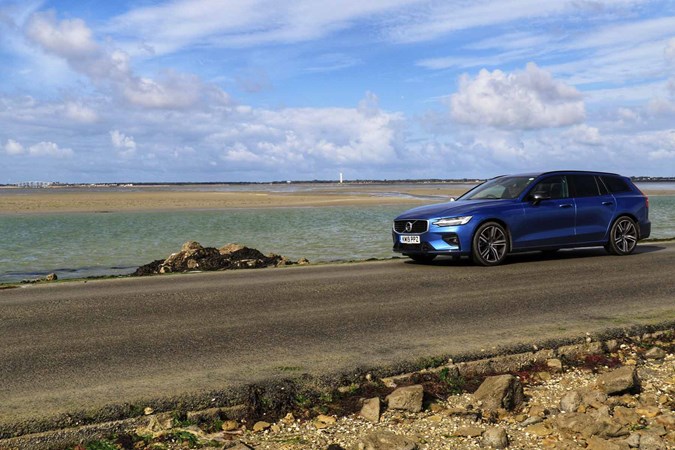
We’ve all got weird goals and for a while one of mine has been to drive across a very unusual road in France called the Passage du Gois.
It’s the historic link between the island of Noirmoutier and mainland Vendee, and is only accessible during low tide. The rest of the time it sits four meters under water.
That’s because this 2.5-mile paved sandbar lies on the silty bottom of the Altantic ocean and a crossing can only be undertaken during two short periods of the day.

The island it leads to is also home to the most expensive and delicious potatoes in the world. This seemed more than enough reason to visit alone, frankly.
Of course any trip to France requires crossing a much larger body of water first, one that doesn’t come with the convenience of a direct road route at low tide.
With the V60 packed as tightly as its 529-litre boot would allow we set off with plenty of time to get to Dover to catch our ferry. Obviously an inexplicably enormous traffic jam on the M25 nearly scuppered the whole enterprise though, and meant we managed to be the very last vehicle on the ferry. Oops.
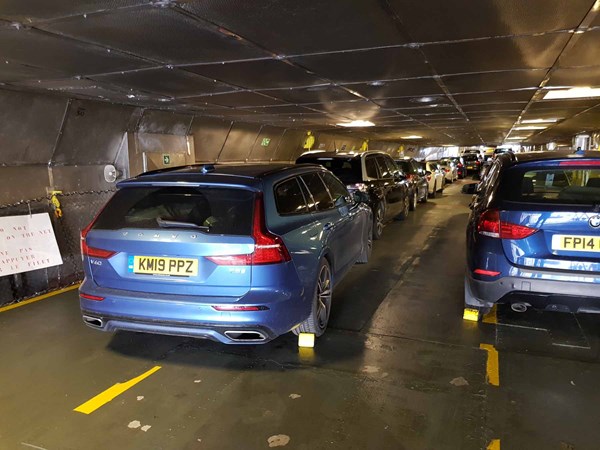
Still with that minor panic and most of northern France navigated we arrived at our campsite, immediately bought several kilograms of French chips, and after checking the next day’s tides for the millionth time, went to bed.
You might be wondering why I wanted to do this in the first place. Well, it’s increasingly rare these days that you find something that is not available 24 hours a day, seven days a week, so the fact that you can only cross the Gois during two one hour slots (plus half an hour either side if you’re feeling daring) makes it seem a more valuable experience.
The timings are governed by the unflinchingly hard and fast nature of the tide. If you are late then unlike the kind ferry staff who let us board anyway, you will be submerged, no negotiation. Time and tide and all that.

Plus I liked the idea of the bragging rights of being able to say I’d driven a car on the bottom of the sea. Also, the potato thing I mentioned before.
You’re not left to your own devices though – as well as many terrifying helpful signs there is a very easy to use website with crossing times spelled out for idiot Brits like us.
And since it’s only a couple of miles long you can get across it very easily in the time given before the sea rushes back in, even though your speed is restricted to a crawl.
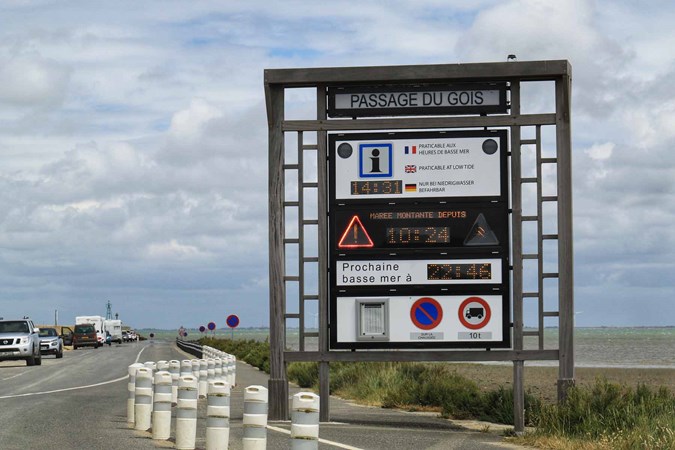
For the completely unprepared there is also a massive digital matrix board on the road leading up to the Passage, so in reality there’s no excuse for timing it wrong.
If you want to avoid all of this carry on (or make the crossing at any other time other than low tide) there is a fabulous bridge you can use, but this isn’t anywhere near as exciting.
Unsurprisingly given its two-times-a-day nature the Passage is very busy with cars and also loads of people walking across. This can make it a bit tricky to negotiate the narrow track as traffic flows in both directions.

The paved surface is very rough (it spends most of its time underwater) so we were grateful for the optional adaptive dampers in the V60, which had their work cut out to filter some of the bumpier sections.
Some sections of the road were as smooth as you could want, going someway to disguising the fact that we were inescapably navigating Spongebob’s driveway. Others were not, and just a tyre’s width away from the paving slabs was evidence that this was indeed the bottom of the actual sea.

I’ve driven on peculiar roads before – those that cut through mountains or link chains of small islands together – but there’s something extremely unsettling about realising you’re miles from solid ground, with the relentless tide on its way back in.
The sat-nav screen in the V60 painted a similarly odd picture – just inches of blue either side of our sea-coloured Volvo. I know the Swedish manufacturer has something of a line in ocean-going yachts but I wasn’t keen to test out our estate’s bouyancy.
Still, there was some comfort in the huge refuge towers that have been constructed along the Passage. These have been put in place to offer somewhere for stranded fishermen or motorists cut off by the water. Cars do get stuck, and then washed away, on this route every year.

Across the other side, in one piece and still marvelling at the fact this pockmarket, seaweed-slippery route has been used in the Tour de France several times, and we were ready to experience everything Noirmoutier had to offer.
Because this was an ancient tourist location in France that inevitably meant a festival of some sort at the island’s medieval castle and confusing parking regulations everywhere else. We cheated and left the Volvo in a large car park in town to avoid hazards like this.

Still the island itself is a stunning warren of pastel-painted houses in the finest of French traditions, with a much sleepier feel to the mainland we had only just left behind.
It’s obviously a popular spot with coach tours (not that we saw any on the Passage) and that meant weaving through the crowds in town, only to find ourselves in more peaceful surroundings seemingly just around the corner.

At lunchtime we discovered that the island is home to not only those incredible potatoes but also the best smelling rotisserie I have ever encountered.
Thankfullythe shop not only sold sublime chicken but also the island’s famous spuds, left to cook in the bottom of the oven underneath the roasting birds.
We bought as much of both as we could carry and stuffed them into the biggest baguette (technically a pain) we could find. I have yet to eat something more sensational. Sometimes I wake up thinking about that sandwich.

After that we went back to our chalet via the bridge (boo) since we didn’t want to wait until 11pm to go home. Even that was memorable, with stunning views out of all the windows.
The Passage was everything I’d hoped it would be and I’m very grateful for the V60’s smooth gearbox and grippy tyres on the slippery surface. It wasn’t quite like driving off-road but it’s as close as I’d like to get in a family estate.
It’s also an incredible cruiser, capable of dispatching huge miles across southern UK and northern France with a cabin full of tired and stressed passengers, soothing music wafting from its stereo with superb clarity.
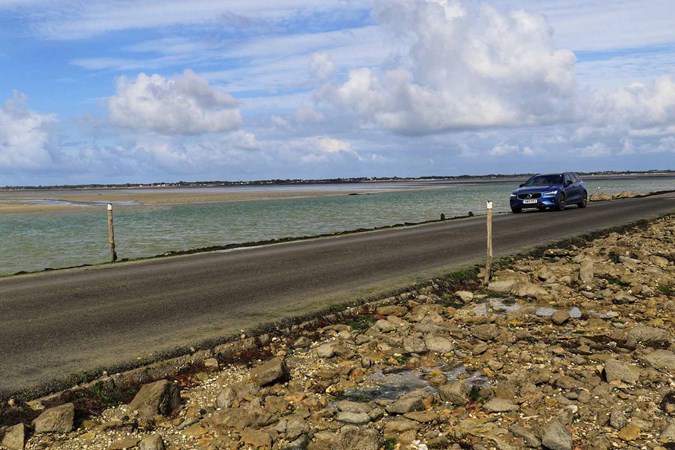
Also, it looks a bit like the sea, doesn’t it?
Update 5: Practicality and safety
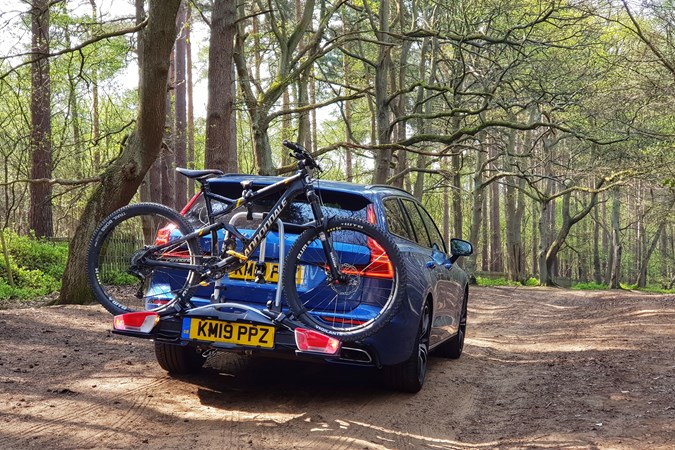
Every manufacturer has inescapably stereotypical qualities. Handily Volvo’s are largely positive – while some of its rivals are associated with tailgating and disconnected indicators (naming no names) the Swedish maker is synonymous with practicality and safety.
Those assumptions are not without a basis in fact – Volvo has developed (or at least pioneered) many safety innovations we now take for granted, whether it’s the three point seat belt, side impact protection or curtain airbags. The V40 was for a long time the safest car Euro NCAP had ever tested and the company is aiming for zero deaths in its new cars by 2020.
We’ll get onto how the V60 hopes to contribute to that target later but let’s talk practicality first, because it should be immediately clear from the exterior styling that this car is not a boxy spare-room-on-wheels like an old Volvo 850.
However, this mid-sized estate actually does quite well for luggage space, with 529 litres seats up and 1,441 with them down. That’s more than the Audi A4 Avant, BMW 3 Series Touring and Mercedes-Benz C-Class Estate, and nearly as much as the larger Volvo V90.
It’s not as big as the Skoda Octavia Estate I ran previously though, and that car had handles in the boot to collapse the seats, rather than having to walk around and reach through the rear passenger door. It also offers no split level storage like that car – there’s just the £150 optional space saver spare wheel under the boot floor. Another probably niche complaint – the hooks for holding things don’t pop out so it’s hard to hang a helmet from them. You do get a powered tailgate on all models though.
The loadspace is at least flat from front to back, and I’ve taken to protecting the carpet with an optional two-sided mat from the accessories catalogue (£180!) which is pricy but very effective, and even has an extra bit to protect the plastic bumper. Plus it fits properly in the boot without getting rucked up every time you load something in, like my bike. But more on that later.

This V60 features a 10cm longer wheelbase and that means good space in the back, where you’ll notice the material quality feels just as good as the front, which is a nice touch. Plus you get a wide leather armrest with pop-out cup holders and a small drawer to store things in.
Like the front seats, the rear bench is nicely sculpted to provide loads of back support for passengers to go along with the strong leg and headroom. The headrests can be popped down using a button on the main screen too, which is handy when you forget to put them back down and then can’t see out of the back.
The door pockets are quite small though and due to a wide transmission tunnel I wouldn’t recommend sitting in the middle chair for long. That said, there’s plenty of room for my large Isofix sear, with little plastic tunnels in the seatback to help locate its legs.

For my older child I’m using a Volvo high-backed booster seat (£180) which is slim and lightweight but apparently very comfortable, he says. It’s certainly less back braking to carry than the one I normally have to haul up the stairs to the office.
Helping to keep the children within the vehicle at all times is the £180 optional powered child lock function – essentially a button on the driver’s door armrest that deactivates the rear door handles. I know it sounds unnecessary but if you realise you’ve left the child locks off while doing 70mph on the motorway it’s very handy to be able to reactivate them at the press of a button.
Inversely when I’m giving adults a lift somewhere I can let them get out of the car without having to walk around and open their door for them from the outside when I’ve left them on by mistake. Basically, if you have kids, just tick this box.

Up front you get more capacious door bins, and a good-sized elbow cubby with phone charging USB sockets. There’s a 12v plug in the double cup holder covered by an attractive slatted lid, and a tiny tray in front of that, but I’m not sure what it’s for.
Like I’ve said before I love the hunkered down driving position of this car and the seats are very adjustable but it’s worth baring this in mind if you struggle to get down into low cars. The only negatives in the front are the size and location of the b-pillar, which requires me swinging my legs past to get out, and also presents quite a big blind spot.
Presenting an even bigger blind spot is this Thule towbar mounted bike carrier (another accessories catalogue purchase, at £400). When attached it blocks out most of the view from the rear window, and also the reversing camera.
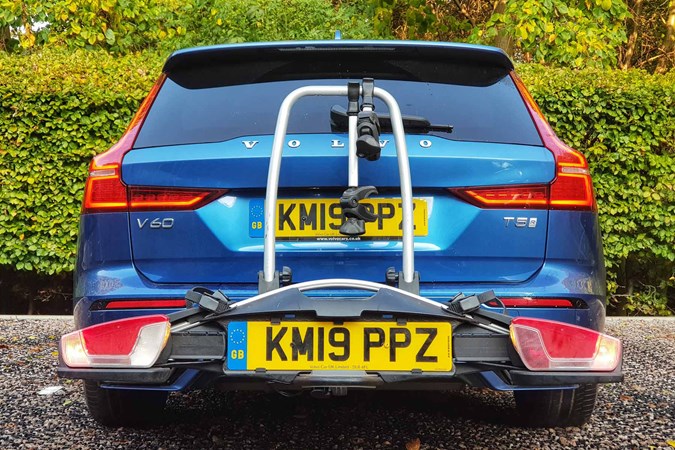
It also requires the optional £1,075 retractable towbar. This pops halfway out and has to be locked in place by hand unlike some of its rivals (BMW 3 Series Touring) which are powered and deploy automatically.
Still, it’s hardly much work to position it properly (I basically just kick it into position with my foot now) and means you can drive around with it tucked away when not in use so no-one mistakes you for a caravanner.
The bike carrier locks in place for security and features two lockable frame mounts, plus a ratchet strap for each wheel. It’s a bit tricky to thread these various elements through when carrying two bikes but super secure once you’ve done so. I’ve written a bit more about this in our bike rack group test.
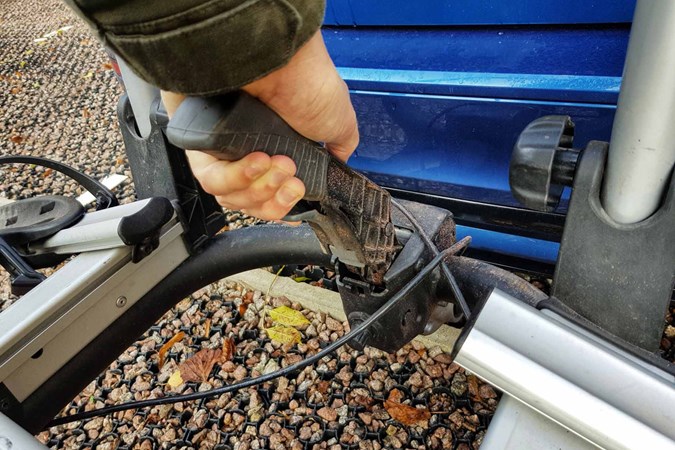
My biggest gripe is the fact it knocks out Volvo’s semi-autonomous Pilot Assist system (basically adaptive cruise control and lane keep assist) leaving you with normal cruise control or the adaptive version, but no lane keep.
In reality this isn’t the biggest problem in the world – I don’t actually use Pilot Assist that often as I find there’s always too much traffic, as it insists on leaving a vast braking gap that invites undertakers (not the funeral kind), but it’s worth knowing if you’re a fan of the system and plan to attach a bike to the back.
It’s part of the £1,625 Intellisafe Pro pack that gets you things like blind spot monitoring, cross traffic alert, rear collision mitigation plus autodimming glass for the interior and exterior mirrors.
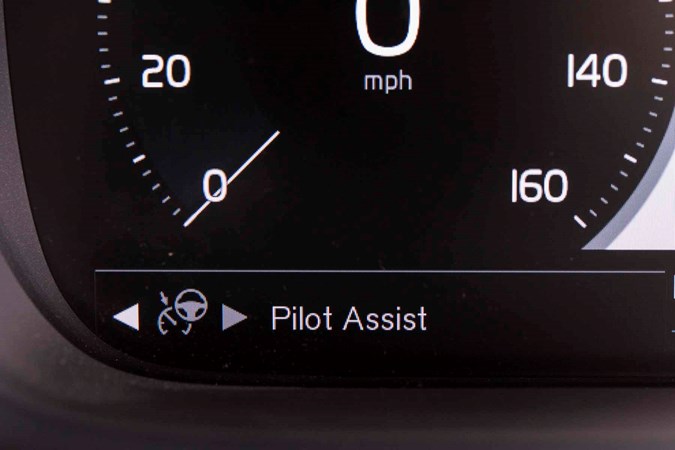
Unsurprisingly the V60 was given a full five stars by Euro NCAP – and that was without the optional safety kit, so that’s a strong indication that this is car that will look after you in the event of a crash.
Thankfully I’ve not had to fully test that side of the Volvo’s personality but what I can say is that the various safety systems do definitely err on the side of caution. As I said, for some things like the like the adaptive cruise control and lane keep this can be a bit annoying but the blind spot monitor and cross traffic alert go a long way to addressing a few of this car’s less visible corners.
Update 6: Verdict
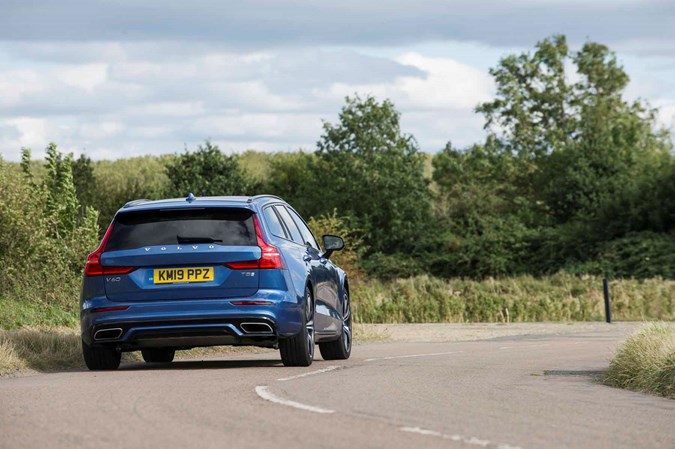
Unbelievably and very upsettingly my time with the V60 is up, and this brilliant blue estate has been whisked away after what must have been the quickest six months of my life.
I started off this long term test by asking whether a £50,000 Swedish wagon was really worth the extra cash over the significantly cheaper Skoda Octavia vRS Estate(s) I had previously run, and become suitably enamoured by.
The most basic of those two cars cost £26,900 – a substantial saving over the Volvo but one that came at a price in terms of spec, and therefore not a completely fair comparison. That car had no auto box, no fancy stereo, no comfort enhancing adaptive suspension. A better benchmark would be the green model, which was more like £35,000 once we’d finished ticking most of the options boxes.
Even so, the Octavia still felt like incredible value for money, and that made it deeply satisfying to drive. It was also more fun to drive and had a bigger boot. Where the V60 claws back some credibility is how much more upmarket it feels, even if that was reflected in the price.
Something I liked about the Skoda was how much it felt like ‘my’ car when I met up with friends or family on the weekend. On the flip side, my former Audi A4 Avant long termer (a great car, make no mistake), always felt like someone else’s. If that makes any sense.
The Volvo somehow skirts around both camps – it’s a very nice thing without appearing overly showy, and in R Design Pro trim it looks subtly sporty without shouting about its performance. In short, it’s a great option for people who don’t feel the need to advertise how well they’re doing on the outside of their car.
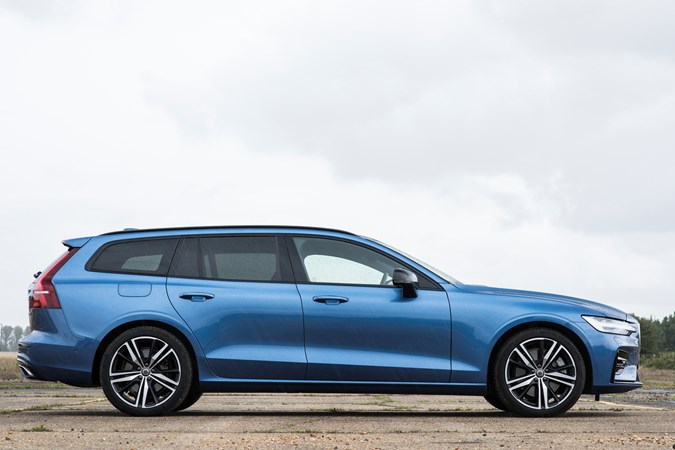
That’s a big part of why we made it our 2020 Parkers Medium Family Car of the Year. Its image, like its performance, ride and practicality, are just superbly judged, resulting in a very wide appeal that will suit a great many drivers.
That will only be boosted by the fact that the hybrid range has been fully launched, so there’s an engine for everyone. I’d encourage you to consider the T5 petrol if you don’t do the mileage to justify a diesel or plug-in model, even if it I only got an average of 31.6mpg from it. The Octavia was slightly better and over the course of 10,000 cost me £246 less to fuel. That’s good considering it had a roof rack on it for most of that time.
Still, for some the Skoda badge is still an issue, and its value for money appeal will be less attractive than the smarter looking interior materials and better refinement of the Volvo. In reality they appeal to slightly different buyers, with the vRS feeling significantly more like a hot hatch than the grown-up Volvo. Other engines are of course available, but in my opinion the Octavia’s DSG auto works better than the Volvo’s Aisin ‘box on less powerful models.
I’d still pick the Octavia if it were my own money, but I’d understand why you’d pick the V60. If only for the way it looks and that absolutely fantastic stereo.
More relevant I suppose is whether you’d pick the Volvo V60 over a German rival like the BMW 3 Series Touring. Well, rather conveniently, that’s a question I’ll soon be able to answer even more fully, as I’ll be testing one of those for six months as my next long termer.



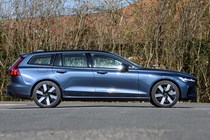
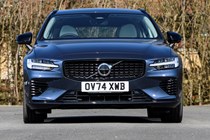
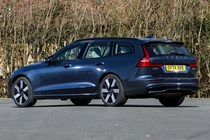



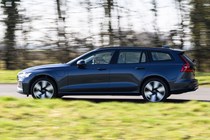
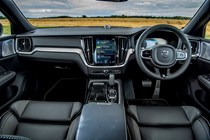
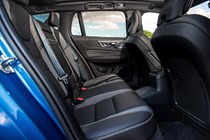
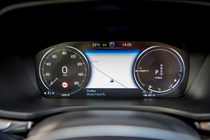

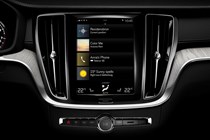
.jpg)
.jpg)
.jpg)
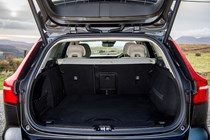
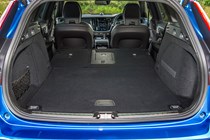















.jpg?quality=50)
.jpg?quality=50)
.jpg?quality=50)

